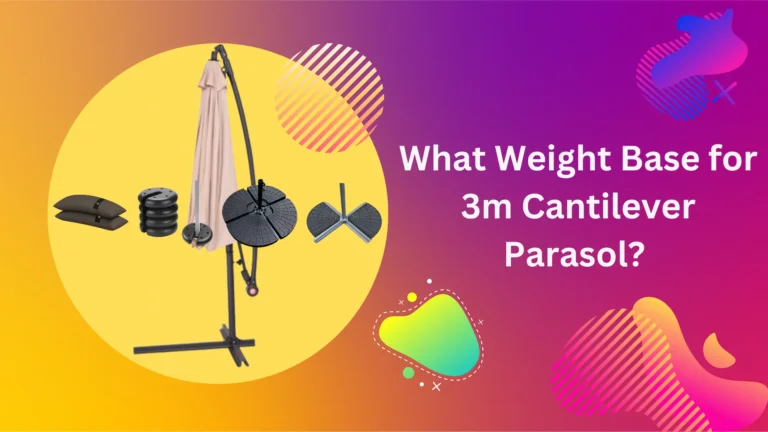The Benefits and Downsides of Memory Foam Mattresses
Did you know that over 80% of people experience improved sleep quality on memory foam mattresses?
While these popular bedding options offer exceptional comfort and support, there are important considerations to remember.
From alleviating pressure points to potential heat retention issues, the benefits and downsides of memory foam mattresses play a significant role in determining your quality of sleep.
Understanding these factors can help you decide when choosing the perfect mattress for your needs.
Important, before making any decisions about purchasing a memory foam mattress, it is important to seek advice from a sleep expert or healthcare professional.
They can provide personalized recommendations based on your specific needs and preferences. Remember that what works for one person may not work for another, so it’s always best to consult with an expert before making a final decision.
Key Takeaways
- Benefits of Memory Foam: Memory foam mattresses provide excellent support and comfort by contouring to your body shape, relieving pressure points, and reducing motion transfer for a better night’s sleep.
- Best Sleeping Positions: Opt for sleeping on your back or side when using a memory foam mattress to maximise its benefits and promote spinal alignment.
- Back Health: Memory foam mattresses can help alleviate back pain by providing proper support to the spine and reducing discomfort associated with poor sleeping positions.
- Downsides of Memory Foam: Be aware that memory foam mattresses may retain heat, potentially causing discomfort for those who sleep hot, and they might have a slight off-gassing odour initially.
Benefits of Memory Foam
Personalised Comfort
Memory foam mattresses contour to individual body shapes, providing tailored support for a restful night’s sleep. They can adjust firmness based on body weight and sleeping position, ensuring maximum comfort.
By reducing discomfort, they enhance overall sleep quality significantly. Their versatility caters to various preferences, making them a popular choice for users.
Memory foam mattresses excel in pressure relief by distributing body weight evenly across the surface.
This feature helps alleviate pressure points, especially in sensitive areas like hips and shoulders. By promoting better blood circulation during sleep, they contribute to improved overall health.
They help reduce tossing and turning by enhancing comfort throughout the night.
Motion Isolation
One of the standout features of memory foam mattresses is their ability to absorb movement, preventing disturbances from a partner’s movements during sleep.
This characteristic creates a stable sleep environment, allowing for an uninterrupted rest throughout the night. For individuals sharing beds, memory foam mattresses enable better sleep quality by reducing the impact of movements, making them an ideal choice for light sleepers.
Memory foam mattresses offer dust mite resistance due to their dense foam structure, making them a preferred choice for allergy sufferers. This resistance ensures a healthier sleeping environment, particularly for individuals prone to allergies.
Compared to traditional mattresses, memory foam requires less frequent cleaning, providing convenience and peace of mind for those concerned about allergens.

Best Sleeping Positions
Side Sleepers
Memory foam mattresses conform to the curves of the body, offering optimal support for side sleepers. By alleviating pressure on the shoulders and hips, they promote a comfortable sleeping position. This helps in reducing pain and enhancing spinal alignment, crucial for side sleepers’ well-being.
For side sleepers, memory foam mattresses provide tailored support by conforming to the body’s shape. This ensures that pressure points are relieved, allowing for a restful night’s sleep.
The material’s ability to distribute weight evenly aids in maintaining proper posture during sleep.
Sleeping on one’s side can sometimes lead to discomfort, especially if the mattress does not provide adequate support. Memory foam mattresses address this issue by cushioning the body and promoting a healthy sleeping position.
This can significantly improve sleep quality and overall comfort for side sleepers.
Back Sleepers
Back sleepers benefit from memory foam mattresses as they effectively support the natural curvature of the spine.
By providing adequate lumbar support, these mattresses help prevent lower back pain. Maintaining a neutral sleeping posture throughout the night is essential for back sleepers’ spinal health.
I find that as a back sleeper, using a memory foam mattress has greatly improved my sleep quality. The mattress’s ability to contour to my body shape ensures that I wake up feeling refreshed and without any back pain. It has been a game-changer for my overall well-being.
Memory foam mattresses reduce the risk of developing discomfort over time for back sleepers. The material’s ability to distribute weight evenly across the body helps in preventing pressure points from forming. This leads to a more restful and uninterrupted night’s sleep.
Front Sleepers
Front sleepers benefit from memory foam mattresses as they offer cushioning to prevent strain on the neck and spine. By allowing for proper alignment while sleeping face down, these mattresses promote better sleeping posture.
The adaptability of memory foam to the body’s shape provides the necessary support for front sleepers.
I have found that using a memory foam mattress as a front sleeper has significantly improved my comfort during sleep.
The cushioning effect prevents strain on my neck and spine, ensuring that I wake up feeling well-rested and free from any discomfort. It has made a noticeable difference in my daily energy levels.
Memory foam mattresses help reduce the likelihood of waking up with discomfort for front sleepers. The material’s ability to conform to the body’s contours ensures that pressure points are minimized, leading to a more relaxing and rejuvenating night’s sleep.
| Sleeping Position | Benefits of Memory Foam Mattress |
|---|---|
| Side Sleepers | – Optimal support for side sleepers- Alleviates pressure on shoulders and hips- Promotes comfortable sleeping position- Enhances spinal alignment- Tailored support by conforming to the body’s shape- Relieves pressure points- Distributes weight evenly for proper posture- Improves sleep quality and comfort |
| Back Sleepers | – Supports natural curvature of the spine- Provides adequate lumbar support- Prevents lower back pain- Maintains neutral sleeping posture- Reduces discomfort over time- Distributes weight evenly to prevent pressure points- Improves sleep quality and overall well-being |
| Front Sleepers | – Offers cushioning to prevent strain on neck and spine- Promotes better sleeping posture- Adapts to body’s shape for necessary support- Prevents discomfort while sleeping face down- Reduces the likelihood of waking up with discomfort- Conforms to the body’s contours to minimize pressure points- Leads to more relaxing and rejuvenating night’s sleep |
Back Health
Spine Alignment
Memory foam mattresses promote healthy spinal alignment by contouring to the body’s shape, and maintaining proper posture in all sleeping positions.
This support helps reduce strain on the spine, preventing long-term back issues. By aligning the spine correctly, these mattresses aid in a comfortable and restful night’s sleep.
Moreover, memory foam supports the natural curve of the spine during sleep, preventing it from flattening out or becoming misaligned. This ensures that the back muscles are not strained during the night.
The ability of memory foam to conform to the body’s shape contributes to maintaining proper alignment, enhancing overall back health.
By providing adequate support, memory foam mattresses reduce the risk of developing chronic back problems.
Proper spinal alignment while sleeping promotes a healthy posture and reduces the likelihood of waking up with back pain. This contributes to better overall back health and quality of life.
Pain Relief
Memory foam mattresses are effective in alleviating chronic pain conditions by providing targeted support where needed.
The material’s ability to mould to the body’s contours helps relieve pressure points, reducing discomfort for individuals suffering from pain issues.
This targeted support can significantly improve comfort levels during sleep.
Furthermore, memory foam mattresses help reduce pressure on joints by distributing weight evenly across the surface. This even distribution of weight eases the strain on joints, making it an ideal choice for individuals with arthritis or joint pain.
By offering a supportive surface that adapts to individual needs, memory foam mattresses can alleviate pain and discomfort effectively.
Injuries can also benefit from memory foam mattresses as they promote restful sleep and aid in the recovery process.
By providing a comfortable and supportive surface, these mattresses contribute to a faster recovery time for individuals dealing with injuries. The ability of memory foam to adapt to the body’s contours enhances comfort and promotes healing during sleep.
Downsides of Memory Foam
Heat Retention
Memory foam mattresses retain body heat, potentially causing discomfort during sleep. The increased warmth can disturb sleep, affecting overall sleep quality negatively. Users may need to explore cooling options or use mattress protectors to address this issue.
Helpful personal information: I found that using breathable sheets and keeping the room cool helped alleviate the heat retention issue with my memory foam mattress.
Proper ventilation is key during the initial setup phase to reduce the impact of the packaging smell. The chemical odour, known as off-gassing, can linger for a few days before dissipating completely.
Being aware of potential sensitivities to smells is crucial for users considering memory foam mattresses.
I learned that placing an activated charcoal air purifier near the mattress helped in speeding up the off-gassing process. This simple trick made a noticeable difference in reducing the initial smell.
Mattress Weight
The weight of memory foam mattresses can pose challenges when moving or rotating them.
Due to their heft, these mattresses often require assistance for setup and maintenance tasks. Investing in a mattress with handles can make handling and moving the mattress easier for users.
When I moved houses, I struggled with relocating my heavy memory foam mattress until I invested in one with handles. The handles made a significant difference in manoeuvring the mattress around tight corners.
Environmental Impact
Memory foam mattresses raise concerns about sustainability due to their material sourcing. Currently, there is a lack of eco-friendly alternatives in the market for memory foam mattresses. Consumers are encouraged to consider the environmental footprint of their mattress choices.
One way I addressed the environmental impact concern was by researching brands that prioritise sustainable practices. This not only helped me make an eco-conscious choice but also supported companies working towards a greener future.
Final Remarks
The benefits of memory foam mattresses are undeniable, offering unparalleled comfort and support for a restful night’s sleep.
However, it’s crucial to consider the downsides too, such as potential heat retention and off-gassing odours.
Finding the best sleeping position and maintaining back health are essential aspects to maximise the advantages of memory foam while minimising its drawbacks.
Remember, your sleep quality directly impacts your overall well-being.
So, take the time to assess your needs and preferences when choosing a mattress. Prioritise both comfort and support to ensure a good night’s rest. Your body will thank you for it in the long run!
Frequently Asked Questions
Is Memory Foam Good for Back Pain Relief?
Memory foam mattresses can provide excellent support for back pain relief by contouring your body’s shape, promoting proper spinal alignment, and reducing pressure points.
What Are the Best Sleeping Positions for Memory Foam Mattresses?
The best sleeping positions on a memory foam mattress are typically on your back or side. These positions allow the mattress to conform to your body shape, providing optimal support and comfort.
Can Memory Foam Mattresses Help Improve Sleep Quality?
Memory foam mattresses can improve sleep quality by reducing motion transfer, alleviating pressure points, and promoting better spinal alignment. This can lead to more restful and uninterrupted sleep.
Are There Any Health Benefits Associated with Using Memory Foam Mattresses?
Using memory foam mattresses can benefit your health by promoting better posture, reducing aches and pains, and improving overall sleep quality. These mattresses are designed to provide optimal support and comfort for a good night’s sleep.
Do Memory Foam Mattresses Have Any Disadvantages?
While memory foam mattresses offer numerous benefits, some downsides include potential heat retention, off-gassing odours, and initial firmness. However, these issues can be mitigated with proper ventilation and choosing high-quality memory foam products.











